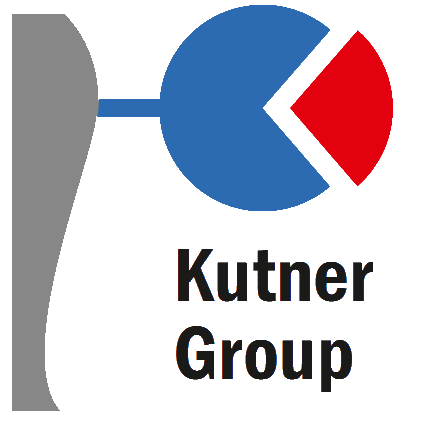Research
Our laboratories and scientific instrumentation
Purity of samples used for film preparation is examined with the use of a gradient HPLC system composed of two pumps Model 6000 of Waters, Millipore Corp. (Milford MA, USA) and a homemade gradient controller as well as a UV-vis detector type SPD10A of Shimadzu Corp. (Tokyo, Japan) or a homemade electrochemical detector. These samples are purified, if needed, by using a semi-preparative mode of this HPLC system.
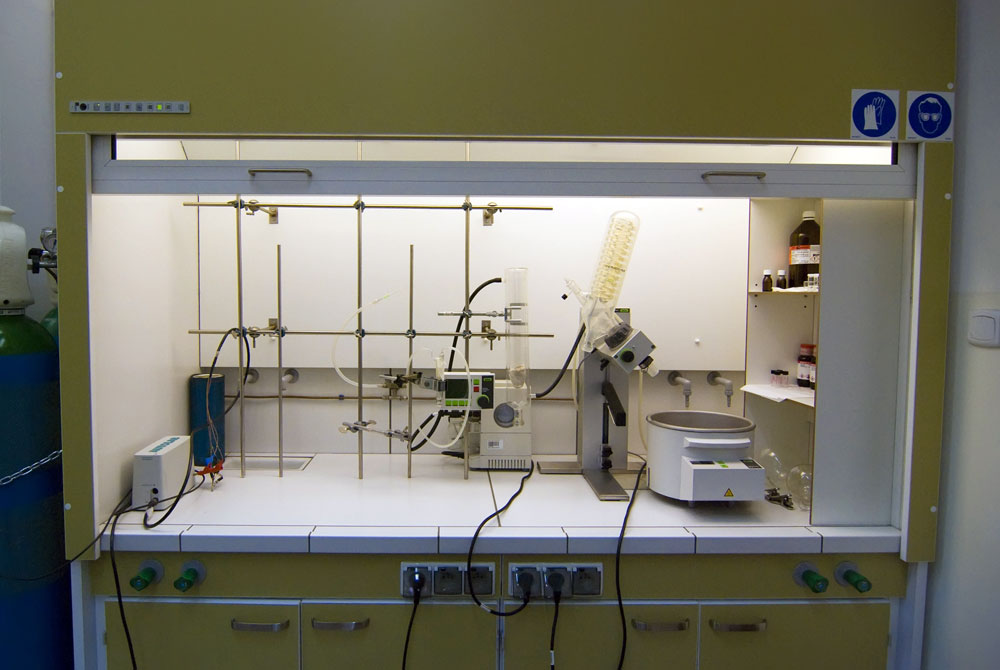
Organic preparation setup

Preparation of the air- and moisture-sensitive samples as well as electrochemical experiments in an anaerobic and moisture-free environment is possible with our LabStar glove box of MBraun (Garching, Germany).
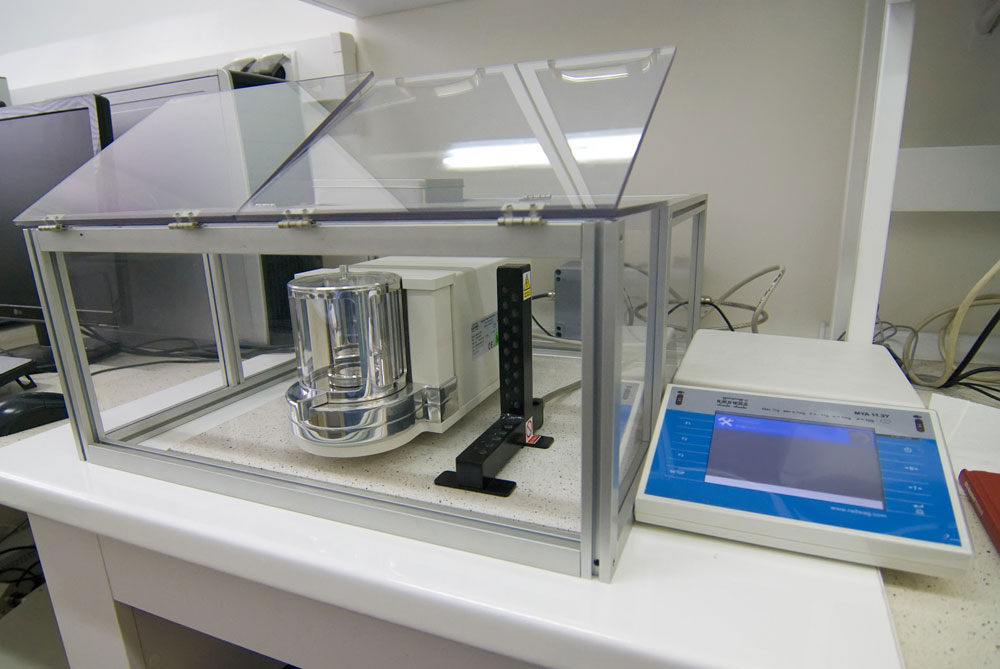
Microanalytical balance
For simultaneous piezoelectric microgravimetry and electrochemistry measurements, we use electrochemical quartz crystal microbalances of the Institute of Physical Chemistry (Warsaw, Poland). The 10-MHz quartz crystal oscillators serve for operation under stagnant-solution (EQCM 5710) or flow-through (EQCM 5610) conditions. The EQCM 5610 microbalance features a flow-through quartz crystal holder suitable for simultaneous piezoelectric microgravimetry and electrochemical detection measurements in flow analytical techniques, such as flow injection analysis (FIA) and micro-bore column HPLC. A unique feature of the EQCM 5710 microbalance is its capability of a simultaneous voltammetric, chronoamperometric, chronocoulometric, or galvanostatic measurement and frequency or frequency changes and dynamic resistance measurement allowing for measurement of both the mass and viscoelastic change during an electrochemical process.
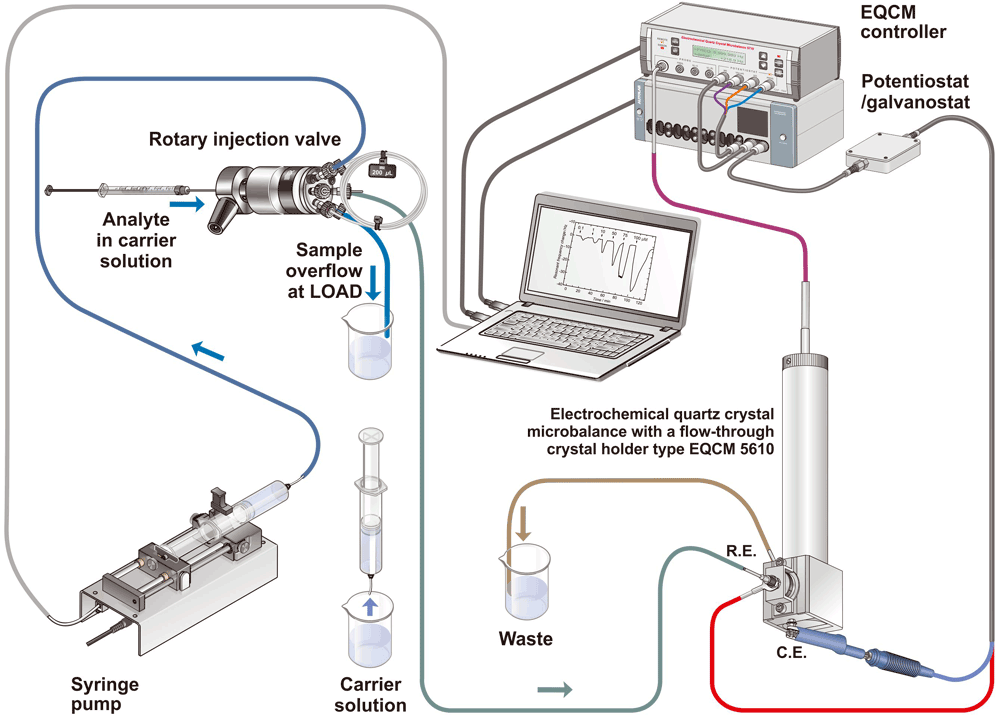
Moreover, visco-elastic properties in solutions of films and mass changes are simultaneously examined by analyzing components of electromechanical impedance of the film-coated quartz crystal oscillators both under stagnant-solution and flow-through solution conditions. For that purpose, an 8712E RF Network Analyzer of Agilent Technologies (Englewood CO, USA) is used, along with dedicated VEE software, either in a transmission (in air) or reflection (in air and in solution) mode of operation. Analysis of the visco-elastic film properties along with the film mass changes can be performed under electrochemical conditions if the Autolab electrochemistry system (see below) is connected.
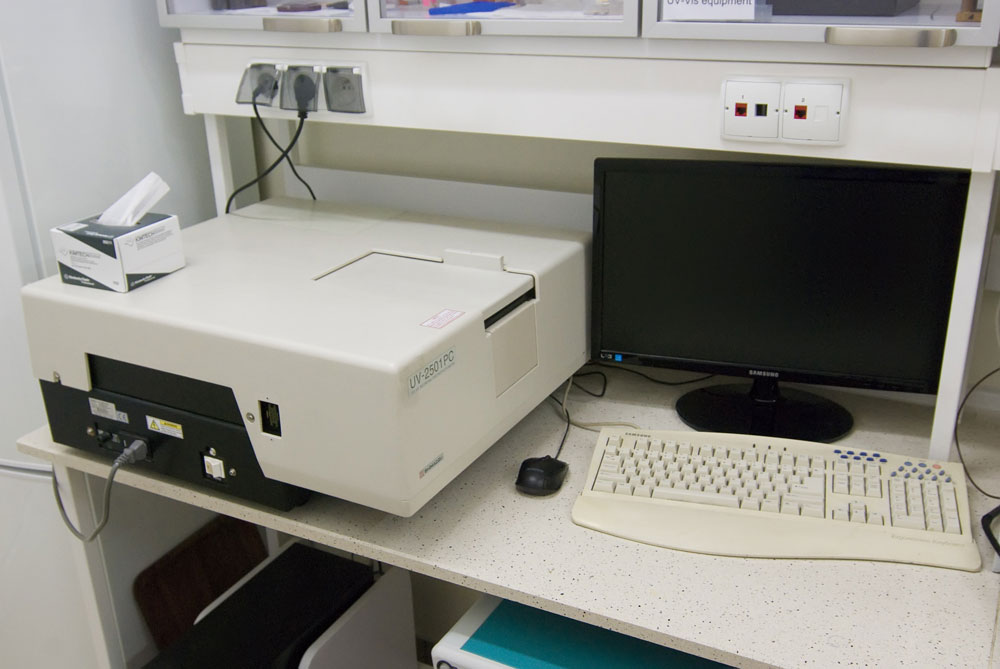
A UV-vis Recording Spectrophotometer Model UV2501PC of Shimadzu (Kyoto, Japan), equipped with the reflection mode, integrating sphere accessory and linear dichroism attachments, serves for the UV-vis spectroscopy and UV-vis spectro-electrochemistry studies on thin films.
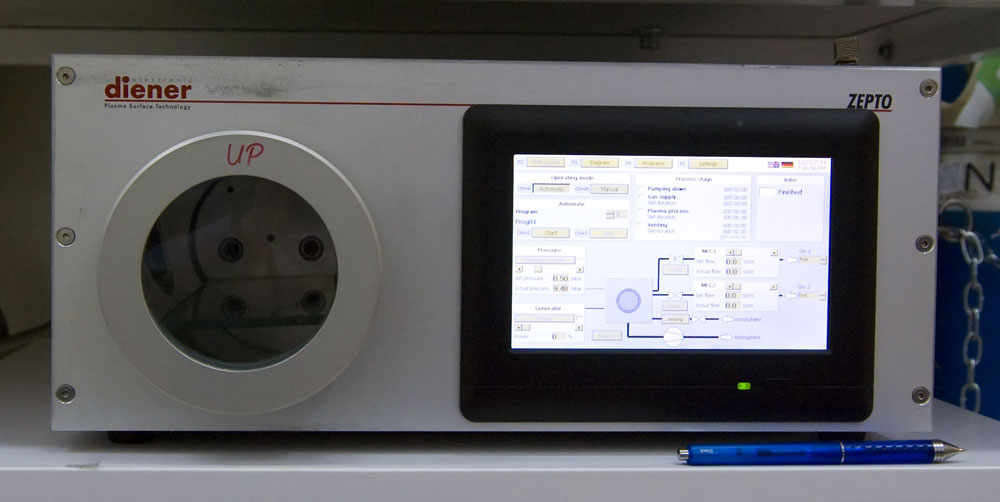
Preparation of thin films well adhering to the substrate surface requires preceding thorough cleaning of this surface. Surface cleanness is important for both transfer of the Langmuir-Blodgett films and deposition of polymer films by electropolymerization. The plasma cleaner Model ZEPTO of Diener electronic GmbH (Ebhausen, Germany) enables this cleaning. For that, the oxygen or argon plasma is generated. Moreover, this cleaner can generate mixed plasma of two gases of the defined composition.
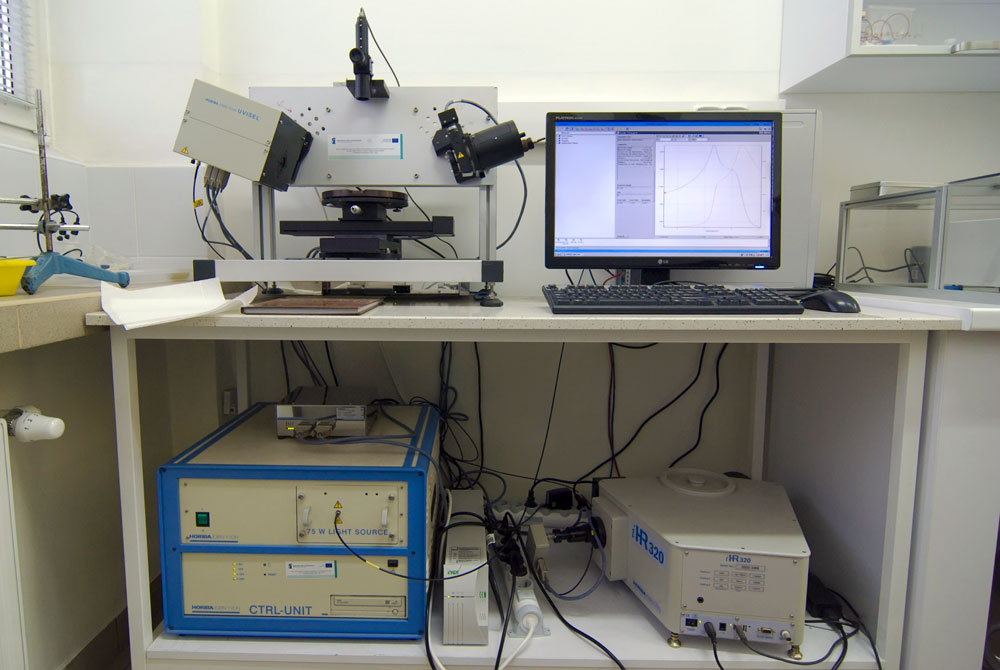
With the UVISEL spectroscopic ellipsometer of Horiba-Jobin-Yvon (Longjumeau, France), working in the spectral range 245 to 2100 nm, thickness as well as optical parameters of single- and multilayer organic and inorganic films can be determined. With the automated sample stage it is also possible to map both sample thickness and optical properties.
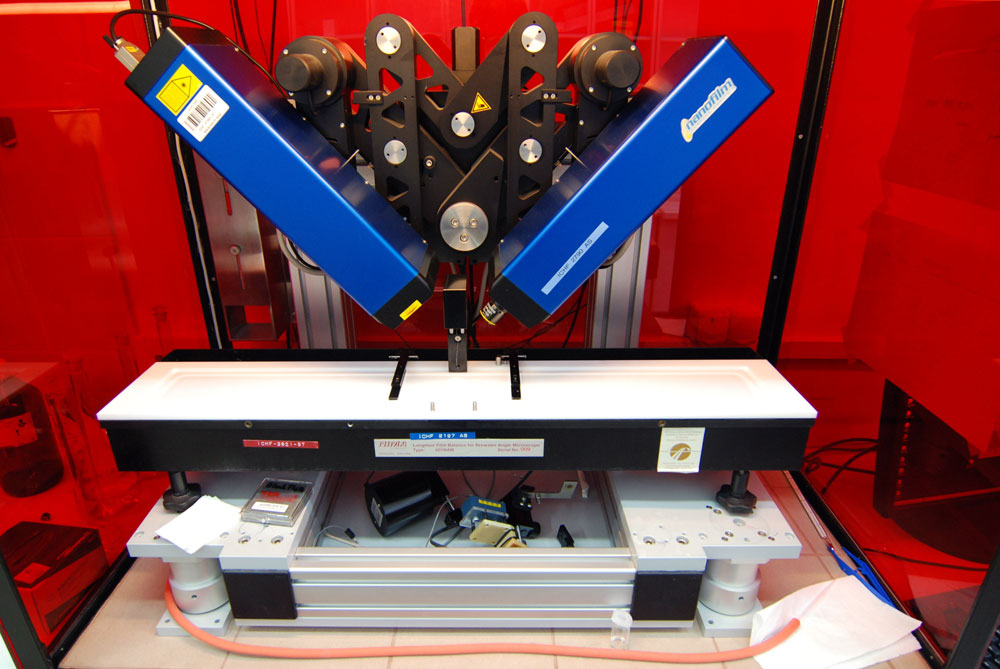
Mono- and multilayer Langmuir films floating on aqueous subphase solutions are prepared and their spreading properties investigated by using a rectangular trough (see photo), Model BAM 601 of Nima Technology, Ltd. (Coventry, UK). During film compression and expansion, surface pressure and surface potential is simultaneously measured with a Nima PS-4 surface pressure sensor and an integrated 320C-H-CE non-contact voltmeter with the 3250 probe of Trek, Inc. (New York, USA) operating as the surface potential sensor, respectively. Moreover, the film surface is continuously imaged with 2 µm lateral resolution, during the compression-expansion cycling, with a Brewster angle microscope Model EP3-BAM of NFT-Nanofilm Technologie, GmbH (Göttingen, Germany). Moreover, this microscope can be used for imaging the Langmuir-Blodgett (LB) films transferred onto solid substrates.
With a Nima D1L linear dipper, the Langmuir films are vertically transferred, by using the Langmuir-Blodgett (LB) technique, onto solid substrates, such as quartz slides, indium-tin oxide optically transparent electrodes (ITO-OTE) or highly oriented pyrolytic graphite (HOPG) specimens, or onto quartz crystal oscillators for the UV-vis spectroscopy, UV-vis spectro-electrochemistry as well as simultaneous electrochemical and piezoelectric microgravimetrical characterization, respectively. Moreover, the monolayer films are prepared on solid substrates by self-assembly while multilayer films by electrochemical polymerization, dip- or spin-coating, drop-casting, electrochemical polymerization, or either electrophoretic or vacuum vapor deposition.
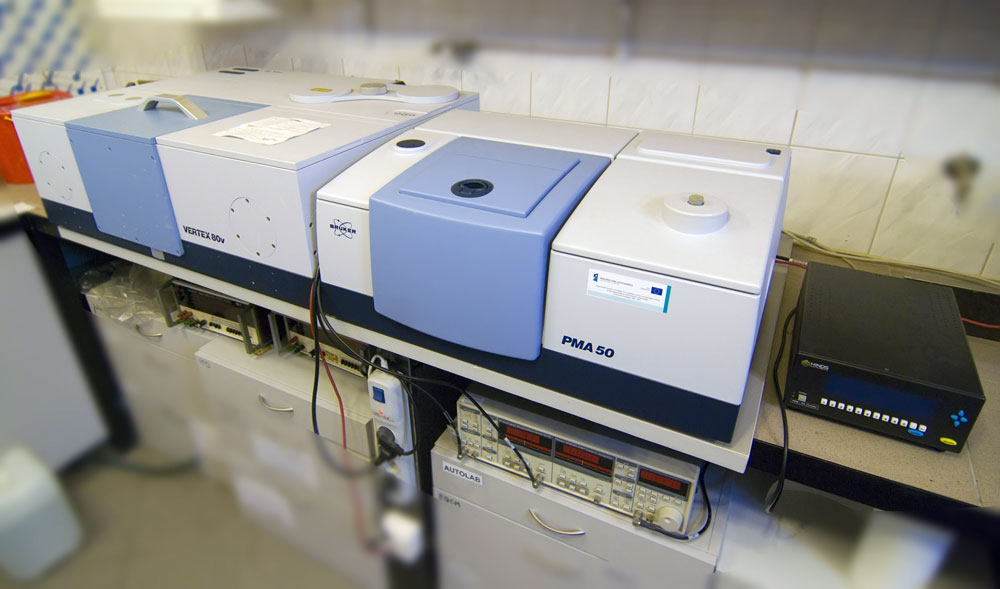
With a Vertex 80v FT-IR spectrophotometer of Bruker (Ettlingen, Germany), equipped with the PMA50 accessory, a polarization-modulated infrared reflection-absorption spectra of the LB films and those self-assembled on the solid substrates can be measured. Moreover, It is possible to record typical transmission IR spectra of samples in KBr pellets with 0.08 cm-1 resolution.
With a Monolayer/Grazing Angle Accessory for FT-IR Spectroscopy of Graseby Specac, Ltd. (Kent, UK) the IR spectra are recorded with a 170SX FT-IR spectrometer of Nicolet (Madison, WI, USA) of either floating Langmuir films or those transferred onto solid substrates by using the LB technique.
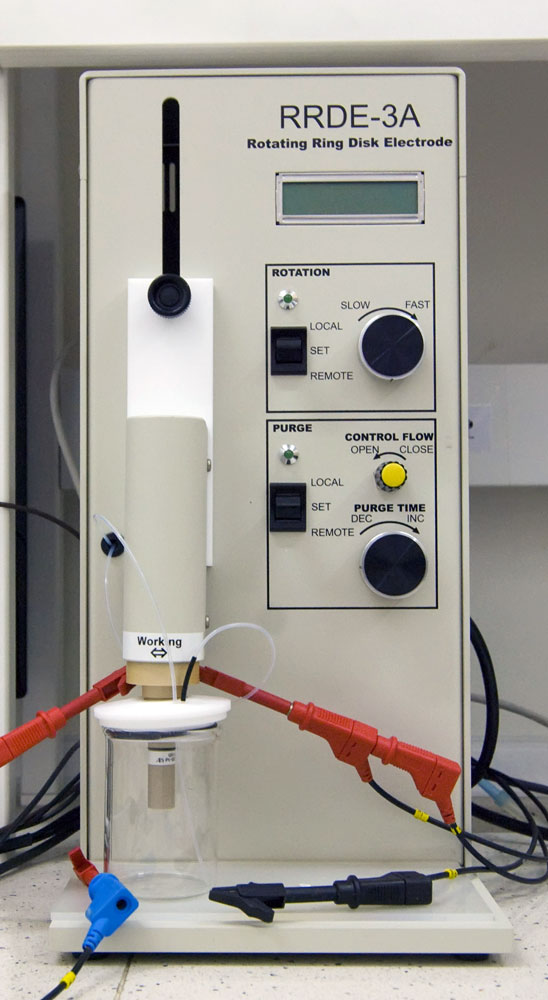
Electroanalytical measurements are carried out with the Autolab or BioLogic electrochemical systems of Eco Chemie (Utrecht, The Netherlands) or BioLogic SAS (Claix, France), driven by the dedicated software. The potentiostats are equipped with different expansion cards such as bipotentiostat, microelectrode unit, frequency response analyzer, etc. The latter is used for measurements of electrochemical impedance spectroscopy (EIS). Moreover, voltammetric and chronoamoperometric measurements on the films with the rotating ring-disk electrode (RRDE) Model RRDE-3A of ALS (Tokyo, Japan) are performed.
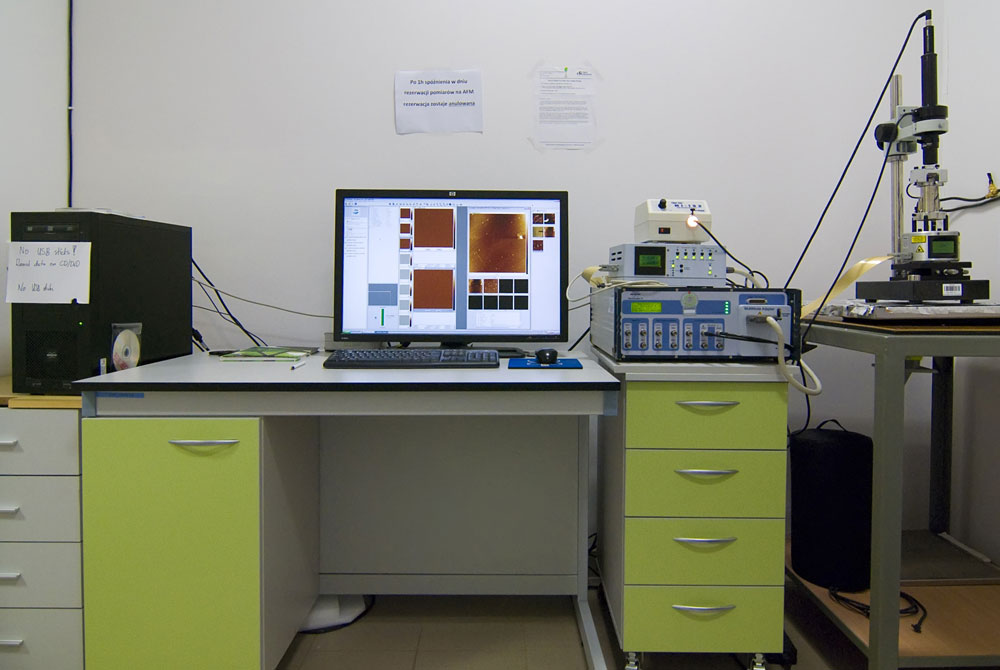
Surfaces of the studied films, deposited either on conducting (electrode) or non-conducting substrates, are imaged using a MultiMode microscope of Veeco (Santa Barbara CA, USA). This microscope (see photo) is configured to enable visualization with the atomic force microscopy (AFM), scanning tunneling microscopy (STM), magnetic force microscopy (MFM), or electric force microscopy (EFM), and more modes of imaging. The microscope is equipped with electrochemical mini cells for surface imaging in the course of an electrochemical experiment. Moreover, it is equipped with a set for optical CCD camera imaging. This set allows for both very precise positioning of the scanning tip on the spot to be imaged and visualization of a sample in the course of an experiment.
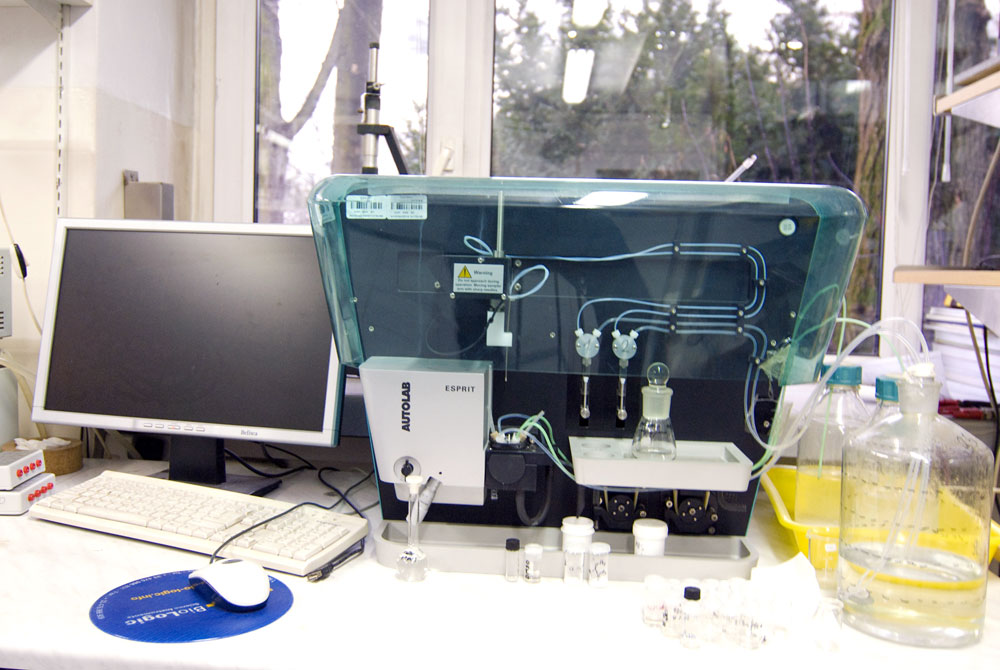
For surface plasmon resonance (SPR) measurements, a double-channel ESPRIT SPR instrument of Eco Chemie (Utrecht, The Netherlands) equipped with open-structure electrochemical cuvette as well as an autosampler is used. The instrument is applied for studying kinetics and thermodynamics of interactions between analytes in solutions and a receptor film. With a potentiostat/galvanostat connected, this SPR instrument can be used for simultaneous measurements of the current and SPR signal change during typical electrochemical experiments.



